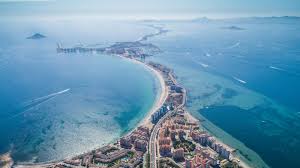Exploring the Wonders of Mar Menor: Spain’s Coastal Lagoon

Introduction: The Significance of Mar Menor
Mar Menor, located in the southeast of Spain, is the largest saltwater lagoon in Europe, covering an area of approximately 135 square kilometres. This unique geographical feature is not only a popular tourist destination known for its calm, warm waters and rich biodiversity, but it also plays a crucial role in the ecological balance of the region. Recent events, including environmental concerns and conservation efforts, have highlighted the importance of preserving this natural treasure for future generations.
Main Body: Current Events and Environmental Challenges
Recently, Mar Menor has faced numerous challenges, primarily due to pollution and climate change. Agricultural runoff, especially from the intensive farming practices in the surrounding areas, has led to significant deterioration in water quality. Algal blooms, resulting from excessive nutrients in the water, notably threaten aquatic life and disrupt the local ecosystem. According to local authorities, during the summer months, concerns over the lagoon’s health intensified as reports of fish die-offs surfaced.
In response to these alarming developments, the regional government of Murcia has launched a series of initiatives aimed at revitalizing Mar Menor. These include stricter regulations on agricultural practices, increased investment in sustainable tourism, and collaboration with environmental groups to raise awareness about the ecological significance of the lagoon. A major project currently underway involves the restoration of natural wetlands, which serve as crucial buffer zones that help absorb runoff before it enters the lagoon.
Conservation Efforts: A Collaborative Approach
The conservation efforts surrounding Mar Menor are becoming increasingly collaborative. Various stakeholders, including local communities, environmentalists, and government authorities, are working together to find sustainable solutions. Recent initiatives have included beach clean-ups and educational programs designed to engage both residents and visitors in protecting the lagoon’s fragile ecosystem. Furthermore, international interest has grown, with researchers from Europe studying the lagoon’s unique characteristics, fostering an environment of scientific collaboration focused on preserving similar ecosystems that face threats.
Conclusion: The Future of Mar Menor
As concerns about environmental degradation grow, the fate of Mar Menor remains precarious, but there is hope. The collaborative efforts and increased awareness surrounding this remarkable lagoon highlight a shift towards more responsible stewardship of natural resources. If these initiatives are successful, Mar Menor can serve as a model for other regions facing similar challenges. For readers, understanding the importance of Mar Menor not only emphasizes the value of biodiversity but also encourages individual actions that can help protect our planet’s precious ecosystems.
You may also like

Exploring the Majestic Dolomites: Nature’s Masterpiece

Exploring the Wonders of Buckinghamshire
